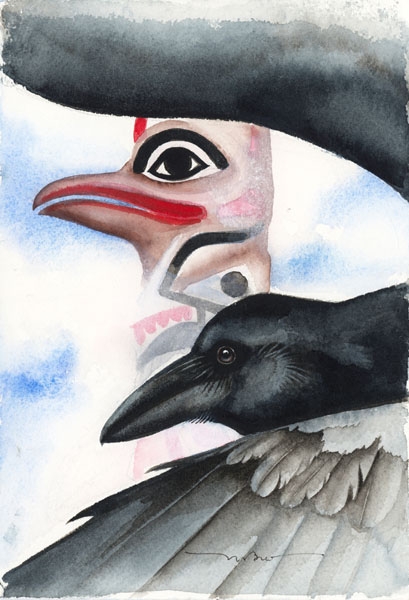

An original from from 2012.
From Wikipedia: The Common Raven (Corvus corax), also known as the Northern Raven, is a large, all-black passerine bird. Found across the northern hemisphere, it is the most widely distributed of all corvids. There are at least eight subspecies with little variation in appearance—although recent research has demonstrated significant genetic differences among populations from various regions. It is one of the two largest corvids, alongside the Thick-billed Raven, and is possibly the heaviest passerine bird; at maturity, the Common Raven averages 63 centimetres (25 inches) in length and 1.2 kilograms (2.6 pounds) in mass. Common Ravens can live up to 21 years in the wild, a lifespan exceeded among passerines by only a few Australasian species such as the Satin Bowerbird and probably the lyrebirds. Young birds may travel in flocks but later mate for life, with each mated pair defending a territory. The Common Raven has coexisted with humans for thousands of years and in some areas have been so numerous that they are considered a pest. Part of its success comes from its omnivorous diet; Common Ravens are extremely versatile and opportunistic in finding sources of nutrition, feeding on carrion, insects, cereal grains, berries, fruit, small animals, and food waste. Some notable feats of problem-solving have been observed in the species, leading to the belief that it is highly intelligent. Over the centuries, it has been the subject of mythology, folklore, art, and literature. In many indigenous cultures, including those of Scandinavia, ancient Ireland and Wales, Bhutan, the northwest coast of North America, and Siberia and northeast Asia, the Common Raven has been revered as a spiritual figure or god.
Copyright Marian Berger. All rights reserved; images are protected under US copyright laws and may not be copied or reproduced in any manner.